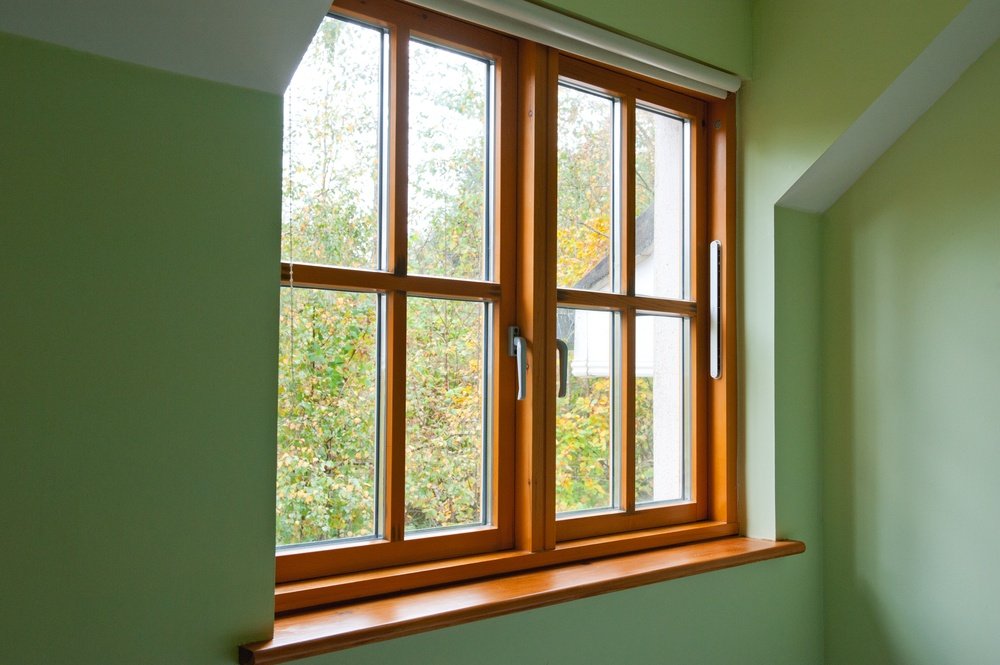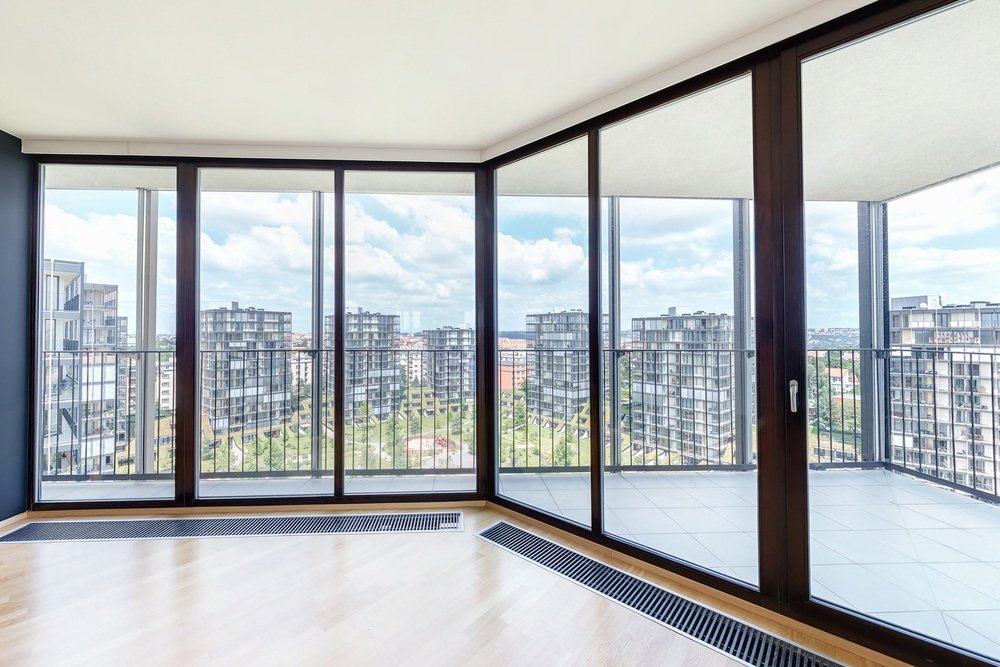How Glazing Can Make Your Home More Energy Efficient
A home’s energy efficiency is a complex, multi-faceted beast. There are so many variables that contribute to how efficient a property is – often it can be hard to even know where to start if you’re looking to reduce your property’s environmental impact. Fortunately, the benefits are tangible, from reduced heating bills to increasing your home’s worth.
There are a few universal contributors to a property’s energy efficiency. Some things always play a big part, regardless of design, location, or age – and one of these is glazing.
The glass installations in a building have a direct impact on its efficiency, and making changes to glazing is one of the most effective (although admittedly not always simplest) improvements for increased performance. But why is this the case, and how can glazing make your home more energy efficient?
The role glazing plays on energy efficiency
To put it simply, windows and other glass installations are usually the parts of a home where the most heat is lost: the more heat that escapes, the more energy is required to keep the house warm.
Poor quality glazing means more heat is required to maintain a pleasant and suitable interior climate. This means more gas or electricity is used by the property.
These also means more gas and electricity needs to be produced and supplied – which means increased emissions and a damaging carbon footprint. When you consider how many homes there are in a given area, it’s easy to see how this problem can escalate.
Well-insulated, high quality glazing reduces this problem by maintaining interior climate more consistently. Energy efficient glazing stops more heat getting out, and lets less cold in – ultimately meaning fewer fossil fuels being barbecued up into our atmosphere.
Energy efficient glazing has come a long way in recent decades in terms of the technology that’s used, and its affordability. Our understanding of the importance of high-quality glazing has also come on leaps and bounds.
Changing opinions
The notion of glass as a means of improving energy efficiency has undergone something of a rebirth. A mere few decades ago, double-glazing came with a handful of negative connotations. It was often seen as a snake oil solution to a problem that people didn’t really think they had, and became synonymous with door-to-door selling.
Today however, research has confirmed that the glass installations in a property are some of the most significant contributors to the efficiency of the building – around 10% of heat loss in a home is attributable to windows.
It’s also worth bearing in mind that this figure is only intended to apply to an ‘average’ home – those living in apartments, for instance, may not experience the same heat loss through the floor or roof, and so glazing will play an even bigger part.
As a result, we now know how important it is to ensure glass is well designed and efficient. Our attitudes towards and appreciation for the importance of glazing have shifted, and new technologies have emerged and been embraced – including double (and now even triple) glazing.

How different glazing solutions impact efficiency
It’s important to note that the various aspects of different glazing solutions will affect energy efficiency in a number of different ways. Some are more important than others, but all are relevant when determining how best to make improvements:
The Frame
Just as every rose has its thorn, every window has its frame (at least until very recently) – and the frame of an installation is often one of the most significant areas for heat loss. The material from which the frame is made, along with the style and quality will influence how efficient it is.
While traditionally frames may have been made from wood, other commonly used materials now include UPVC, Steel, and Aluminium. ‘Frameless glazing’ now exists too, which makes use of silicone bonding to structurally seal panels of glass together.
Types of glass
Naturally, glazing installations will be made primarily from glass. But not all glass is the same, and there are distinct differences between various options. The number of panes involved (e.g 1 for single glazing, 2 for double etc.) will directly impact the efficiency of the window or door – and things such as applied films or coatings can also be used to improve this effect.
The size of the installation
Naturally, larger installations will result in greater potential heat loss. This is true when the windows or doors are shut as well as open (although even huge structural glass solutions can now be designed to ensure very little heat is lost).
The location of the glass
Glass exhibits a quality known as ‘solar gain’ (which is when solar energy transfers into a space, heating it gently). Depending on the location of a window, and whether it is sun facing or not, things like wind, weather, and climate can impact the potential glass has to present both a solution and problem in terms of efficiency.
Tips for Replacing your Glazing
When it comes down to actually improving the energy efficiency of a home through glazing, there are two basic routes a homeowner can take. These differ greatly in the amount of time, effort, and cost involved – but also in the results that can be achieved.
The first of these two solutions is to actively replace some or all of the glazing solutions in a home. There are several ways this can be arranged, from replacing glass panels, to installing completely new solutions. This is, unsurprisingly, by far the most expensive endeavour – but it also yields the best results.
If you’re planning a more extensive renovation or extension, opting to install energy-efficient glazing is usually a good idea in the first place. Regardless of the specifics of your project, improving efficiency will make a space easier and more affordable to heat.
Which glazing option to choose?
With so many different glazing options available, it can be a little overwhelming to know which kind of solutions will suit your home best. If in doubt, it’s always a good idea to speak with your contractor or architect about the pros and cons of various solutions.
Here is a brief overview of the different glazing options:
- Double Glazing: Is the standard for most new windows, utilises two panes of glass with a vacuum seal between them to reduce heat transference. Infinitely more effective than single glazing, and while not perfect, is a good benchmark to go by.
- Triple Glazing: While more expensive than double glazing, triple glazing offers a greater reduction in heat loss.Can reduce the U Value to as little as 0.5 to 0.7 – double-glazing, on the other hand, offers around 1.6 to 1.8.
- Low emissivity coatings: It’s possible to improve the efficiency of a pane of glass itself, with the addition of a ‘low-e’ coating (a microscopically thin and transparent film, that reflects infrared energy away). There are a number of different coatings, so it’s worth speaking to a professional about your options.

Aesthetic Considerations
This is a small point, but nonetheless an important one. When choosing and installing new windows in a property, the visual impact they have will always be a factor in which solutions you choose to go for.
It’s easy to assume that highly energy efficient glass installations must be ‘bulky’, or there won’t be as many options when it comes to their design or style. Fortunately, this isn’t the case at all.
While you’ll inevitably increase the price bracket if you opt for a custom glass installation, even the very highest end of luxury glazing can now perform extremely well in terms of energy efficiency.
Using things like the aforementioned low-e coatings or silicone bonding, even things like frameless glass extensions offer excellent insulation.
Tips for upgrading your existing glazing
Of course, not every homeowner will want to opt for a complete overhaul when it comes to their windows and doors. Replacing these installations can be an extremely expensive endeavour.
If you’re already planning an extension or renovation this may make sense, but if you’re simply looking to reduce your carbon footprint and cut down on your utility bills, this isn’t always necessary.
The other option when it comes to using glazing to improve energy efficiency is to make changes or upgrades to the existing glazing in your home. The tactics you can use range from the small to the slightly more elaborate, but all of these will be more cost-effective and less disruptive than gutting out the windows of your family home!
These are the top tips for upgrading your existing glazing:
- Reseal frames: Window frames can degrade. This is particularly true on older, wooden windows. Organising for the window frames to be professionally re-sealed can make an immediate difference to how insulating they are.
- Better curtains and window coverings: The interior coverings on your windows do have a part to play on how much heat is lost. This isn’t a case of ‘thick curtains will cut your heating bills’; it’s a little more technical than that. But something like a high quality set of blinds can act in a similar way to a low-e coating (albeit in a less effective way).
- Adhesive window films: If you want to take things a step further, you could also opt to install an adhesive film to some of your glazing. They work similar to low emissivity coatings, and will need to be installed professionally.
There’s admittedly a lot to consider, but hopefully this guide will have provided some insight into the role windows, doors, and other glass installations have to play on energy efficiency.
To finish off, we thought we’d leave you with a top tip:
Don’t ONLY think about your glazing
Whatever your reason for wanting to improve the efficiency of your home, whether it’s to cut down on bills or because you care about the impact your property has on the planet, glazing is a vital consideration. It won’t solve the problems we face on its own, but as new technology emerges, and our awareness grows, the ways to reducing the impact of our buildings is ‘clear’.


